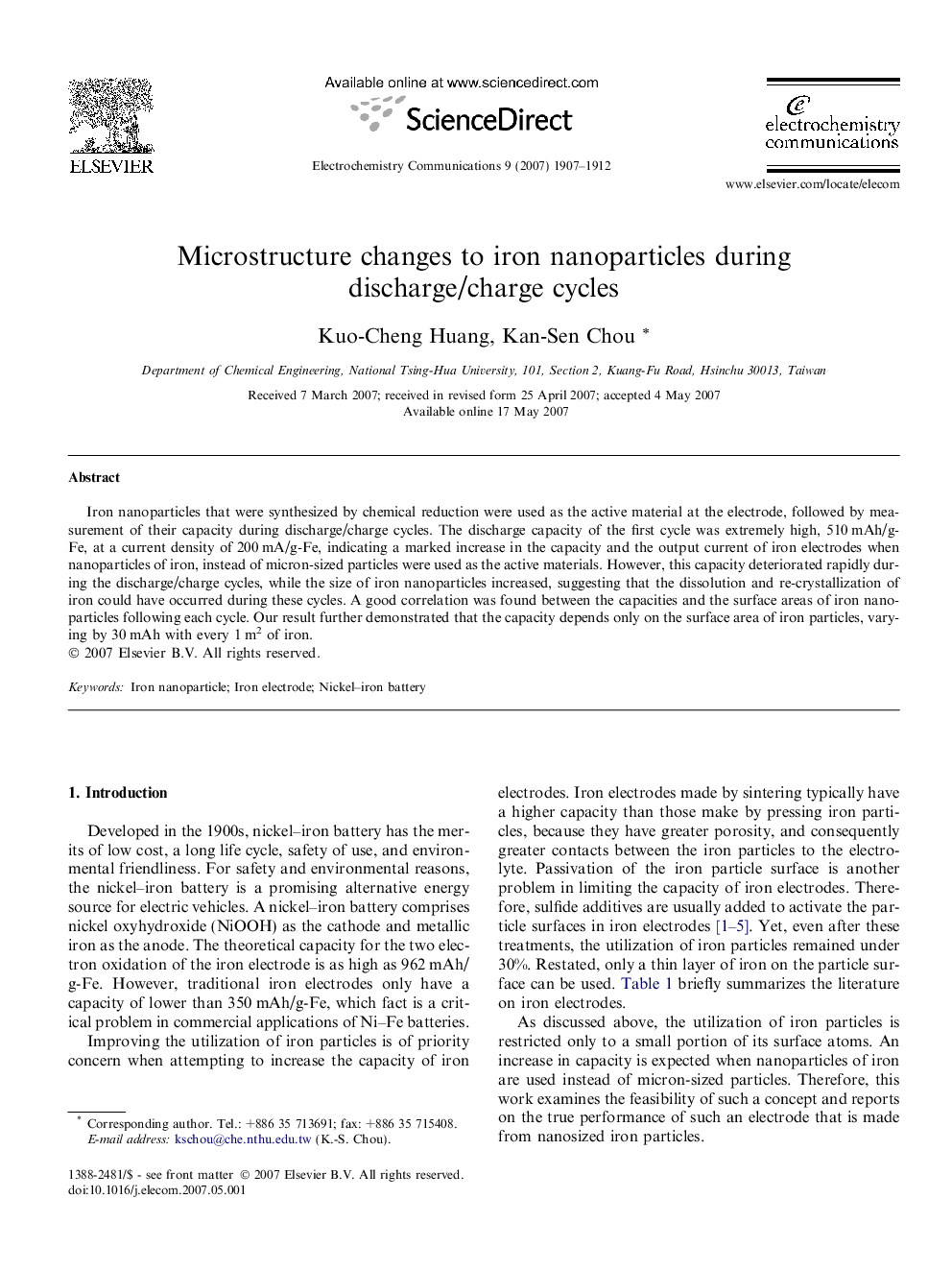| Article ID | Journal | Published Year | Pages | File Type |
|---|---|---|---|---|
| 181744 | Electrochemistry Communications | 2007 | 6 Pages |
Iron nanoparticles that were synthesized by chemical reduction were used as the active material at the electrode, followed by measurement of their capacity during discharge/charge cycles. The discharge capacity of the first cycle was extremely high, 510 mAh/g-Fe, at a current density of 200 mA/g-Fe, indicating a marked increase in the capacity and the output current of iron electrodes when nanoparticles of iron, instead of micron-sized particles were used as the active materials. However, this capacity deteriorated rapidly during the discharge/charge cycles, while the size of iron nanoparticles increased, suggesting that the dissolution and re-crystallization of iron could have occurred during these cycles. A good correlation was found between the capacities and the surface areas of iron nanoparticles following each cycle. Our result further demonstrated that the capacity depends only on the surface area of iron particles, varying by 30 mAh with every 1 m2 of iron.
